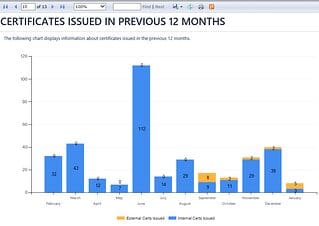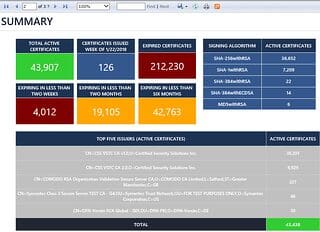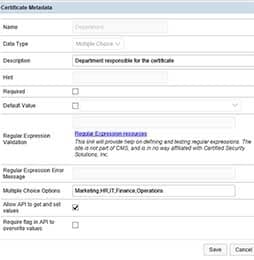Reporting requests can go on forever, and most software provides the ability to create and deliver reports via an integrated reporting tool. While making reporting easy for third-party vendors, usually this limits customer flexibility to extend reporting to meet specific business needs. These new reports require new investments.Proprietary tools cause issues in resourcing, training, and the perception that IT can’t keep pace with the business requests for information. They add another tool to the toolbox that doesn’t deliver additional information but adds to the support burden.
Budgets are driving down the ability of IT to take on more tools for specific use cases. Certificate Management Software (CMS) 5.0 has answered by leveraging tools that currently exist in customer environments for these constant requests for additional reports. CMS 5.0 uses Microsoft’s SQL Server for the inventory, monitoring, and management of certificates and Public Key Infrastructure (PKI) operations. Since SQL Server already has a reporting engine, SQL Server Report Server (SSRS), CMS 5.0 has leveraged this service to provide standard reports for business requests which grant customers great flexibility in providing reports for business groups.
Metadata & Collections
Two CMS 5.0 technologies that aid in report delivery are metadata and collections. Metadata allows CMS 5.0 to attach virtual attributes to a certificate record in the CMS database. Collections allow customers to dynamically group certificates for use in searching, alerting, and reporting on the expiration, approval, issuance, and denial of certificates. Metadata is easily created by filling out a form (see image below). The metadata is dynamically added to the CMS 5.0 portal and inventory search interface.

CMS 5.0 leverages a robust searching engine where collections can be created from dynamic queries against the database which include certificate and metadata information like Active Marketing SSL certificates

CMS 5.0 allows specific SSRS reports to be included in to the CMS 5.0 interface. It also provides the ability to schedule report delivery based on metadata and collections that have been created by any role/user granted report permissions.

The combination of the extensibility of SSRS reporting with CMS 5.0 provides the ability to leverage metadata and collections to focus reporting on specific groups of certificates in the Enterprise. Access to these reports allows PKI administrators to provide customer reporting in a fraction of the time of competing solutions without the overhead of introducing a new Enterprise tool. Reference examples of these reporting features below:


Interested in learning more about CMS 5.0? Download our exclusive White Paper to learn how One-Step Automation helps deliver the promises of PKI and the goals of your IT strategy.


